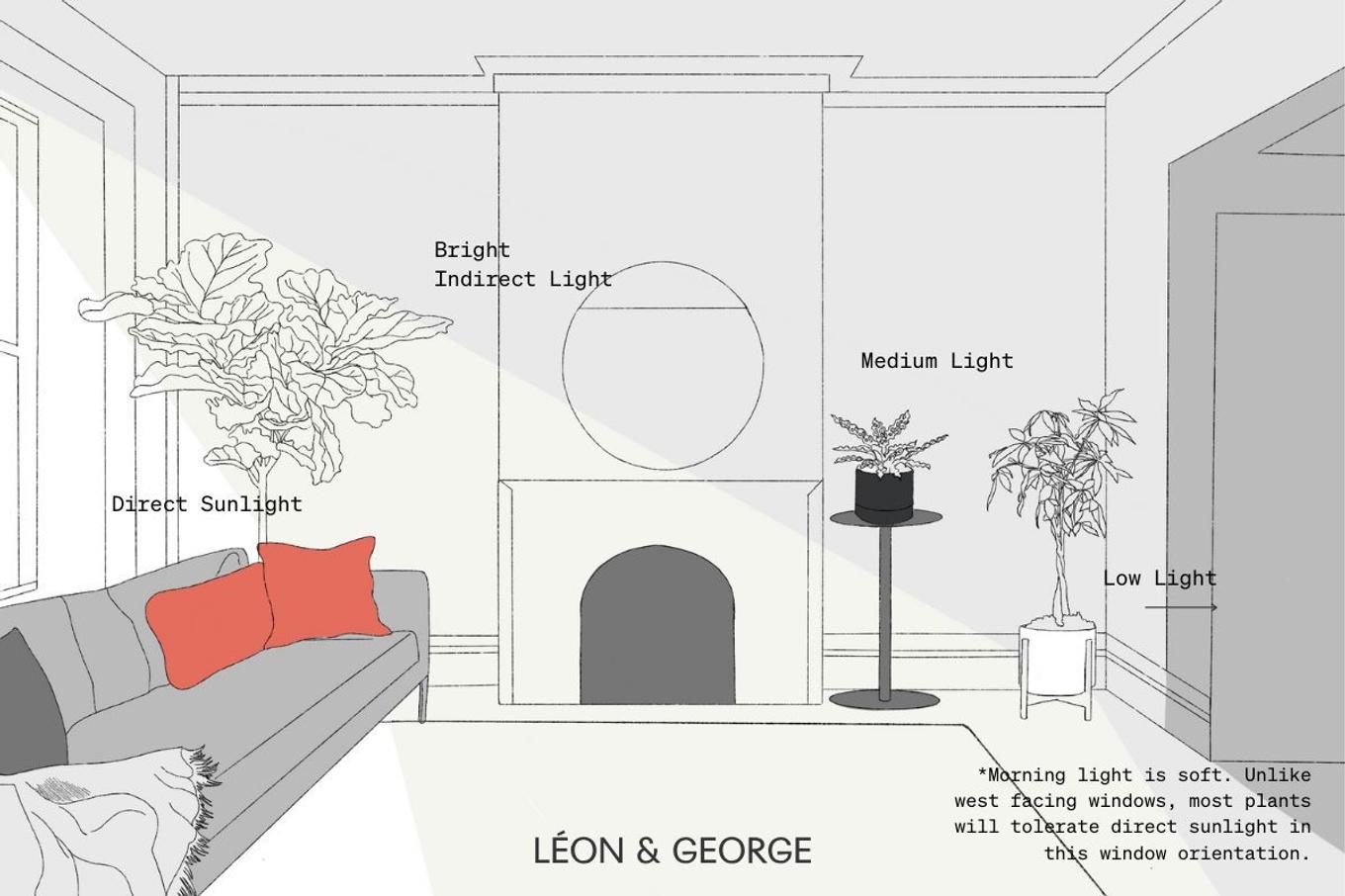Indoor Plant Light Guide

Bringing home a new plant? One of the most important steps in helping it thrive is knowing what kind of light your space offers. While terms like "indirect light" or "low light" might seem vague at first, understanding the basics can help you match your plant to the perfect location in your home. This guide breaks down lighting types, how to identify what you have, and which plants will do best in each condition.
Types of Light: What They Really Mean
Direct Sunlight
This is the strongest natural light your home can receive, usually through south- or west-facing windows that are unobstructed. It shines directly onto leaves and can be too harsh for many indoor plants. But some sun-loving species, like Birds of Paradise, succulents, and Desert Cacti, thrive here.
Bright, Indirect Light
Think of bright indirect light as steady, filtered sunlight. It’s common just to the side of a window that gets some direct sun but where rays are softened by curtains or walls. Many popular houseplants love this condition, including Fiddle Leaf Figs, Monsteras, and Rubber Trees.
Medium Light
This is found in spots that are a few feet away from a bright window. The light is softer, and it’s perfect for versatile plants like Philodendrons, Dracaenas, and Snake Plants.
Low Light
Spaces that are far from windows, or even rooms without any natural light (like interior bathrooms or offices), fall into this category. Some plants adapt well to these conditions, such as Cast Iron Plants, Zanzibar Gems, and Parlor Palms.
How to Gauge the Light in Your Home
Not sure what kind of light your plant will receive? Try this hand shadow test:
Take a piece of paper or some other plane surface and hold your hand about a foot away from it, between it and the light source. What kind of shadow do you see?
- Faint shadow: Low light
- Soft, blurry shadow: Medium light
- Sharp, well-defined shadow: Bright light
When gauging the light in your home or a certain spot in your home, it's also important to take note of your window orientation.
If you're not sure which way your windows face, we recommend using a compass app or look at the sun’s path—morning = east, afternoon = west.
South Facing Windows: The Ideal Scenario
South-facing windows are by and far the most ideal for the majority of indoor plants. That's because they receive consistent light throughout the day. The only thing to watch out for is peak hours when direct sunlight may scorch the leaves of your plant if placed directly in the window.
Almost any plant will thrive if placed in a room with south-facing windows, but below are some of our favorite light-lovers.
North Facing: The Lowest Light
True north-facing windows never receive direct sunlight in the Northern Hemisphere, offering instead a consistent, soft, and diffused light throughout the day. While the brightness may be lower, this gentle illumination is perfect for certain houseplants.
Low light varieties like the Dracaena Lisa, Braided Money Tree, and Snake Plant can thrive in this kind of environment without much fuss.
Depending on the plant, however, something to keep in mind is that a north-facing window during the winter (especially in grayer climates) may not offer enough light for your plant. If your plant is not receiving enough light, consider moving itduring the winter to a different location.
East-Facing Windows: Morning Light

East-facing windows welcome the soft, early light of the rising sun. This gentle morning sunlight makes them ideal for plants that enjoy bright, indirect light without the intensity of harsher midday rays. If your window offers a view of the sunrise, it’s east-facing.
Plants like the Fiddle Leaf Fig and Monstera Deliciosa thrive in this environment, soaking up the calm, energizing light to start their day.
West-Facing Windows: Afternoon Sun

As the sun begins its descent in the afternoon, west-facing windows are flooded with bright, intense light from mid-afternoon through evening. If you can watch the sun set through your window, you’re facing west. This direction receives some of the strongest direct sunlight of the day, which can be too harsh for many houseplants in the summertime.
Whille most plants will be fine near west-facing windows, place them just outside the reach of direct rays to ensure no one gets burned. For sun-loving species like Desert Cactus and succulents, west-facing windows offer just the right amount of intensity to thrive.
























